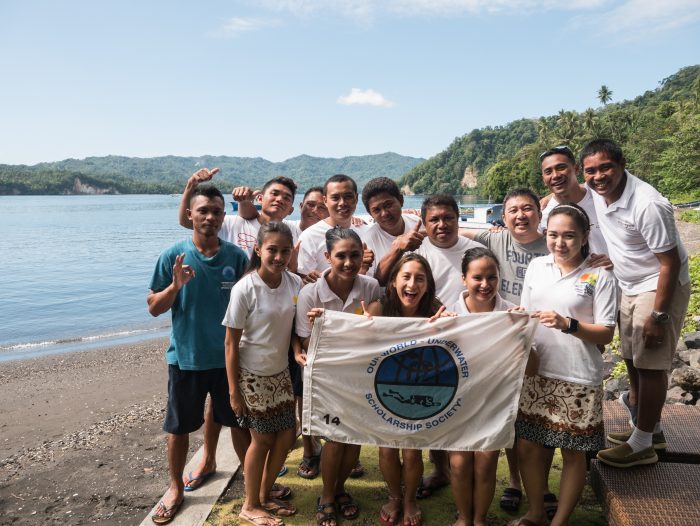“I want to see a mantis shrimp….” I tell William and Ben. They look at each other and laugh. “Well, Mae, you’ve given us an easy week then!”
Here I was in Lembeh, North Sulawesi, Indonesia, with one of the best macro photographers in Asia and the best dive guides in Lembeh strait who could find me any animal I wanted in this mecca for macro life. And yours truly wanted to see one of the most common animals they had. Well I didn’t know Mantis shrimps were so abundant and had my first goal achieved within the first 3 minutes of the first dive. So, I had to up my list of animals to see.
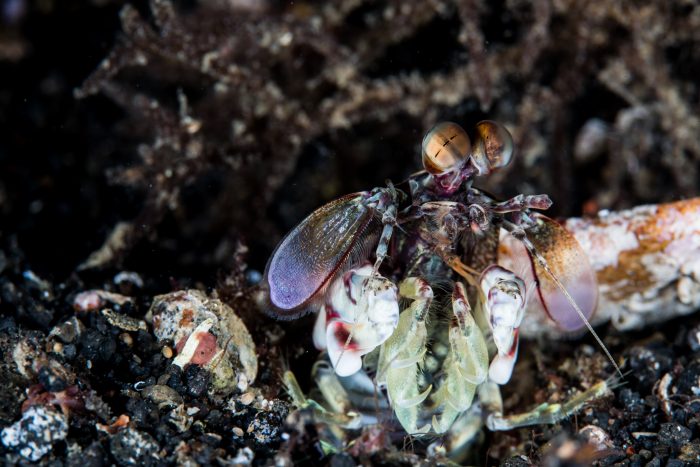
Why do underwater photographers flock to this body of water in between the main land of Sulawesi and the island of Lembeh? Well, Dr. Alex Mustard told me before I left for this trip that all living animals are classified into approximately 34 phyla (divisions of life categorised by body plan). “The more phyla in a location, the more impressive it’s biodiversity.” Rainforests, normally seen as the ecosystems brimming with highest variety of life hold around 17 phyla. “The water’s of Lembeh Strait are home to animals from 32 phyla”.
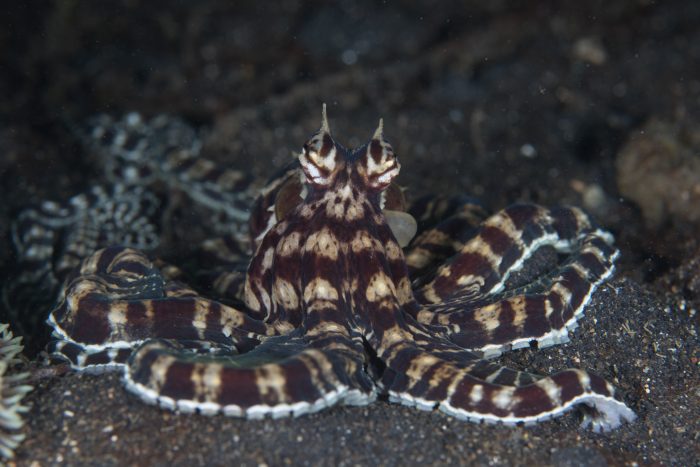
Every time you dive into it’s waters, you are bound to find something you have never seen before. Unless you’re William Tan, a gentleman defined by a passion for good food and photography. As a full-time violinist for Singapore Symphony Orchestra, it is out of pure affection that William undertakes photography. So much so, he couldn’t tell me how many times he’s been to Lembeh, but he’s such a regular that the lovely resort of Cocotinos, where we were hosted, treats him like family. He’s seen pretty much everything Lembeh has to offer, especially in terms of it’s muck diving – rummaging around in it’s black gravelly sand for the weirdest and most wonderful creatures.
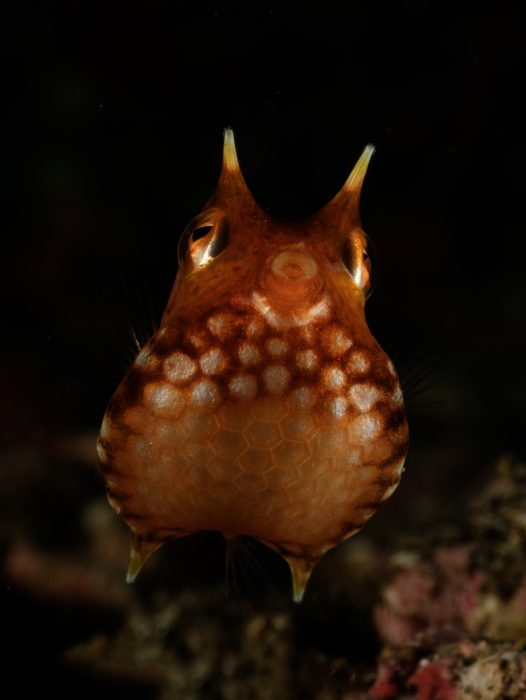
As William had seen them all before, the day dives were planned around the animals I wanted to see. Pygmy seahorses, Blue Ringed Octopus, Wonderpus, Mimic Octopus, Hairy Frogfish, and oh so many different nudibranchs (sea slugs out of a Picasso painting).
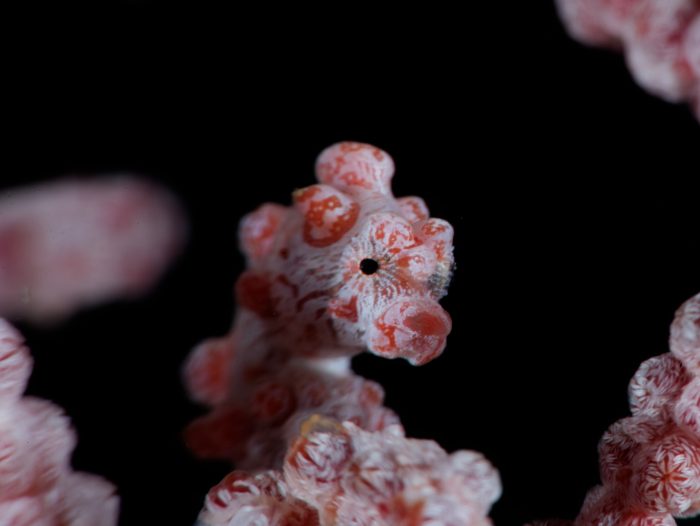
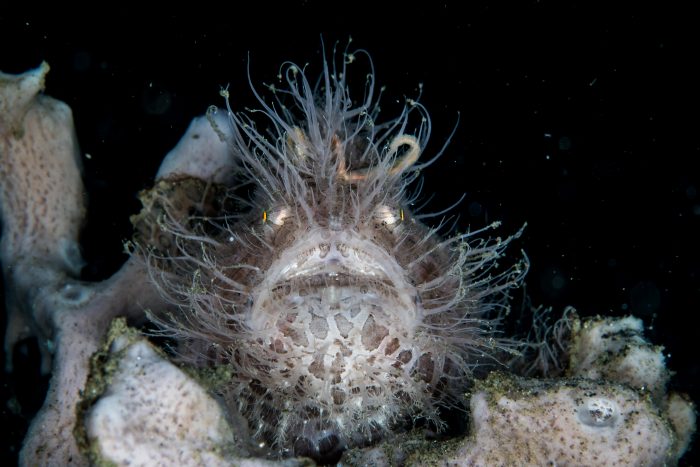
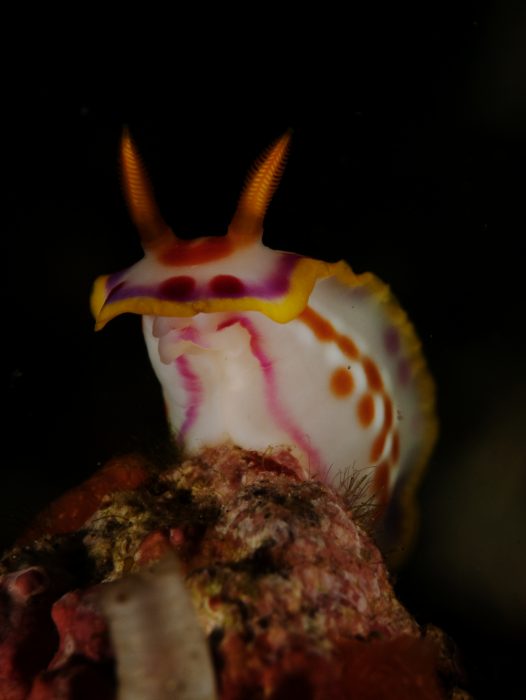
It was like a treasure hunt, my dive guide and I searching around for super cool animals. These crazy looking characteristics evolved for the creatures having to adapt to an environment that has very little shelter. So, if you’re a photographer like William who has taken photos of rarest creatures in this macro heaven, what’s the point for coming back? Black Water Diving.
After the sun had gone down was when William would get excited to jump into the water. In the pitch-black we would head out to the middle of the strait where it dropped down to 60 meters. William would suspend a super bright torch at 15 meters. Then we’d wait… and then, dive in. Black water diving is nothing like a night dive I have done before. With only the torch hanging from the boat as a reference point you float in the utter blackness of the water.
You’d think that this darkness would be void of life? Far from it. The glowing beacon of the marker torch enticed creatures from the deep and dark, like a moth to a flame. It turned the black water thick with life. You float alongside animals that live in a 3-dimensional habitat, inertia and viscosity of the water has different rules for smaller creatures of the sea. They’re not bound to sinking and so instead hang or zoom around in all different directions in a world liberated from gravity.
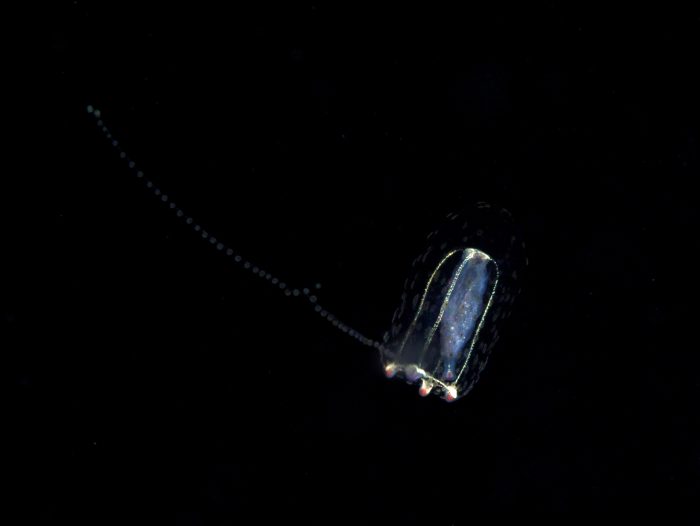
Long translucent strings of gelatinous jelly creatures – sea squirts – hang like ribbons. Small juvenile fish feeding on the swarming copepods (small crustaceans) freeze in your torch light. The voracious arrow worm, only the length of your little fingers nail, snaps its deadly jaws at passing prey. And curious squid glide towards your light beam and use it to highlight their next prey.
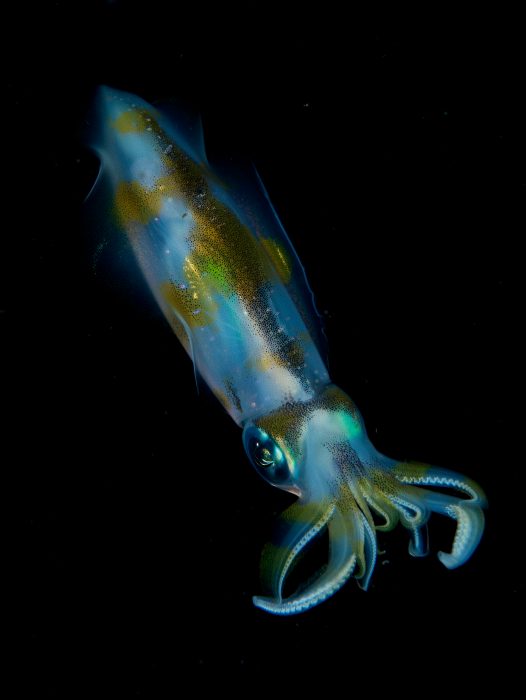
William hunted to take shots of larvae, marine creatures that spend their juvenile stages of life floating in the plankton. I tried my best to keep up with these macroscopic creatures, but they were too fast, too small, too agile in their domain.
At points during these black water dives I would turn around to face the black, place my torch against my chest and waft my hands or watch my fin kicks. Iridescent sparkles of blue would appear when disturbed. Like a moving constellation, the bioluminescence of smaller crustaceans was hypnotic to observe and left me feeling like I was creating magic!
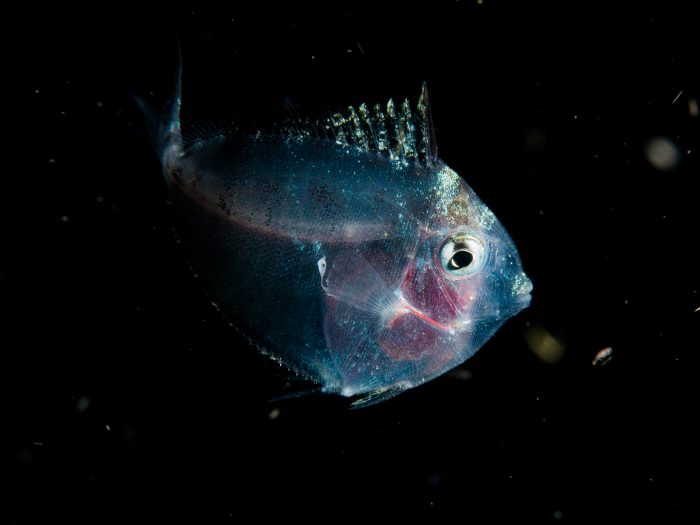
However, amongst all this wonder, there was a tonne of plastic pollution. Oh, yes. The biggest threat of modern time on the sea was present in this wonderland. Washed up along the beaches, lying on the black sand sea bed, and hanging in the water column like misleading jellyfish. It was heart breaking to know that such a pristine location for biodiversity is being heavily impacted by such a plague. It’s difficult to talk about, especially after spending nearly a month in Asia, plastic is a part of daily life with consumption exceptionally high. And there’s an odd attitude present where everyone talks about the plastic as always have been there. Or, they say that seeing animals use the plastic as shelter means it’s a good thing.
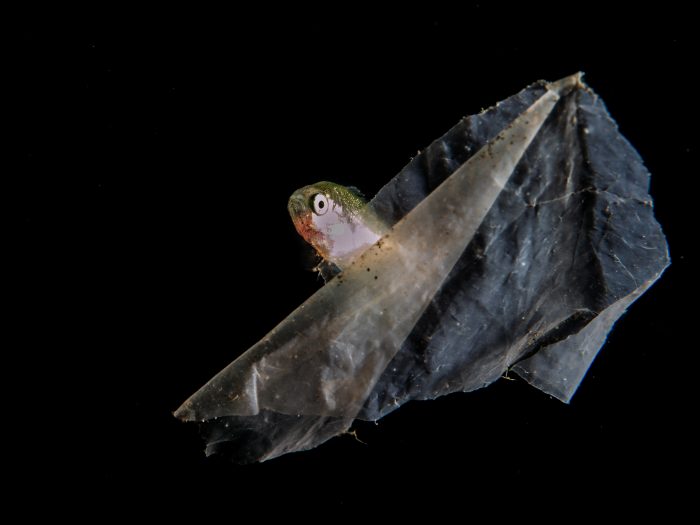
We expect the creatures to adapt. And maybe they can. But, It’s the wrong attitude to have especially about our marine environment. Consider, if these places of such high biological significance were on land, they would be treasured by national parks and protected. After seeing the incredible biodiversity of animals during the day and of the night, knowing that I had only seen a fraction of what was there, I wouldn’t be surprised if we are losing life before it has even been described or seen by our eyes.
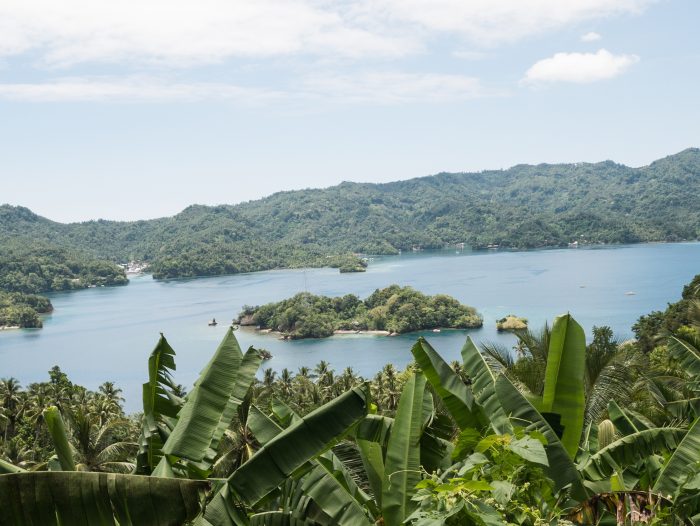
My time at Cocotinos, Lembeh, was short but incredibly sweet. The hotel staff were the most hospitable you could ask for, making me feel just as much at home as they would for regulars like William. Thank you to Martinus for inviting me to stay! My dive guides Ewan, Andre and Ben were exceptional, having eyes like hawks! No no, more like Mantis Shrimps! They knew exactly where to locate the critters and would spot the tiniest critters with the most stunning patterns and shapes. And lastly, thank you William Tan for teaching me how to master macro photography, and showing me the artform that is photoshop. A wizard at both, I couldn’t have asked for a better mentor.
